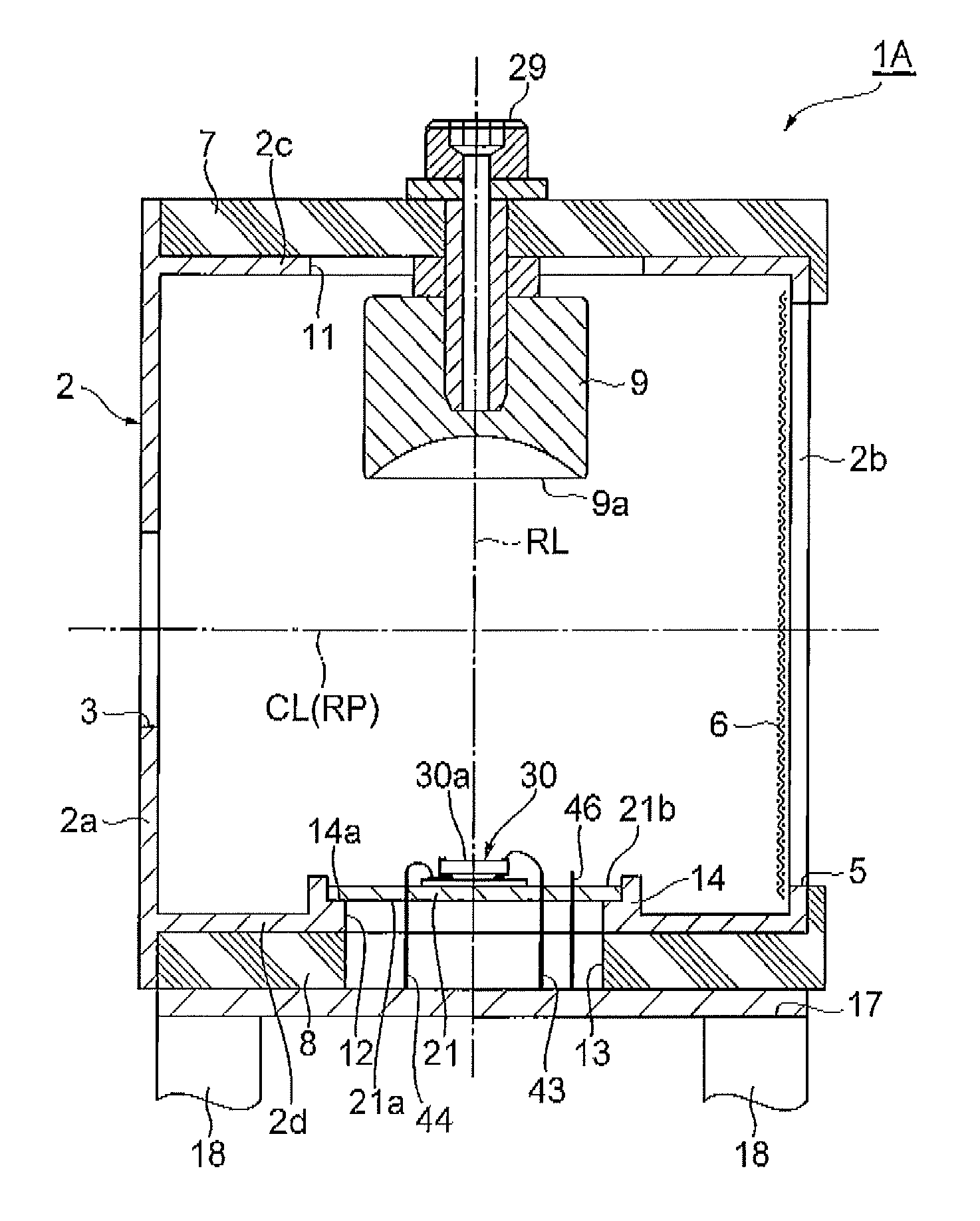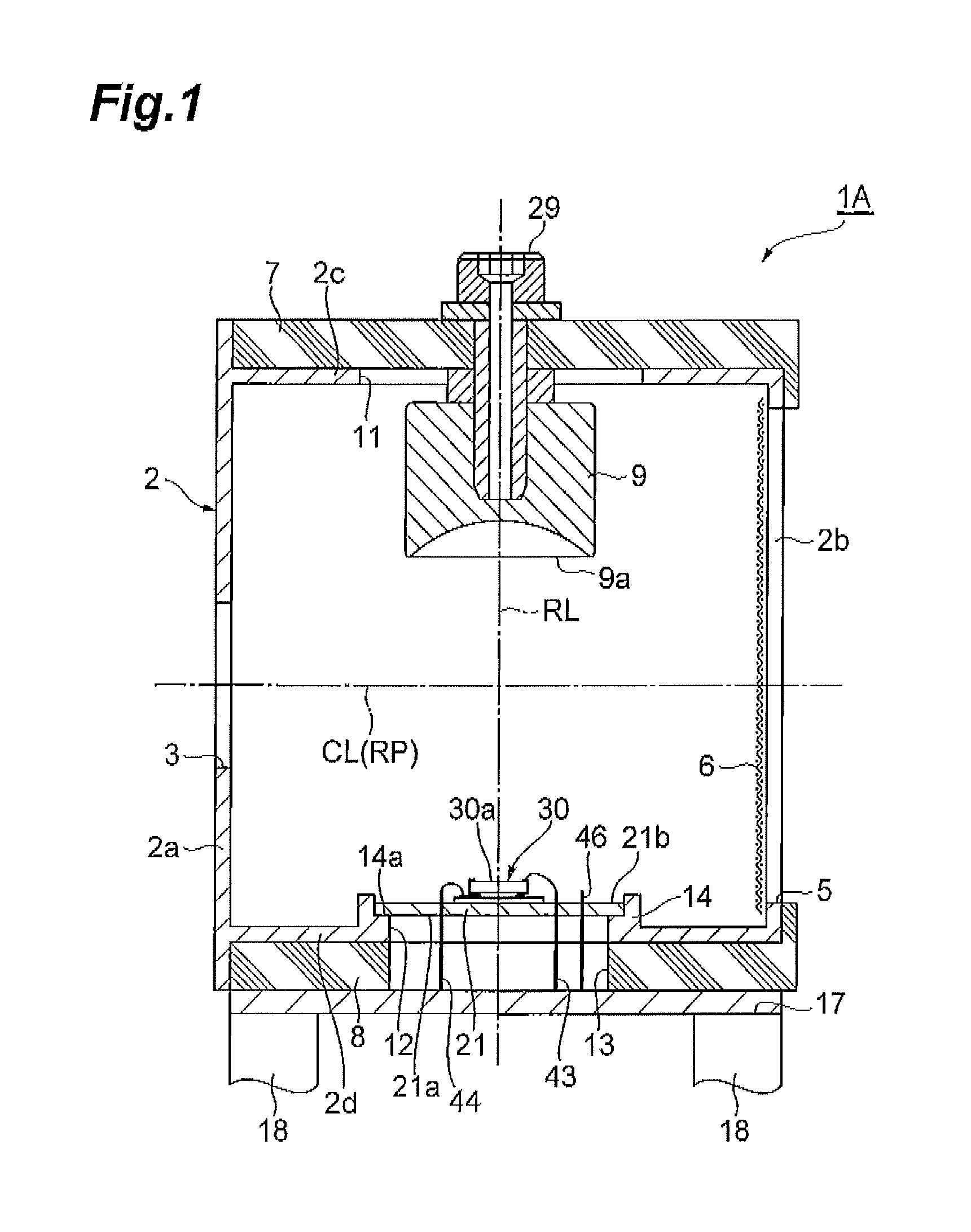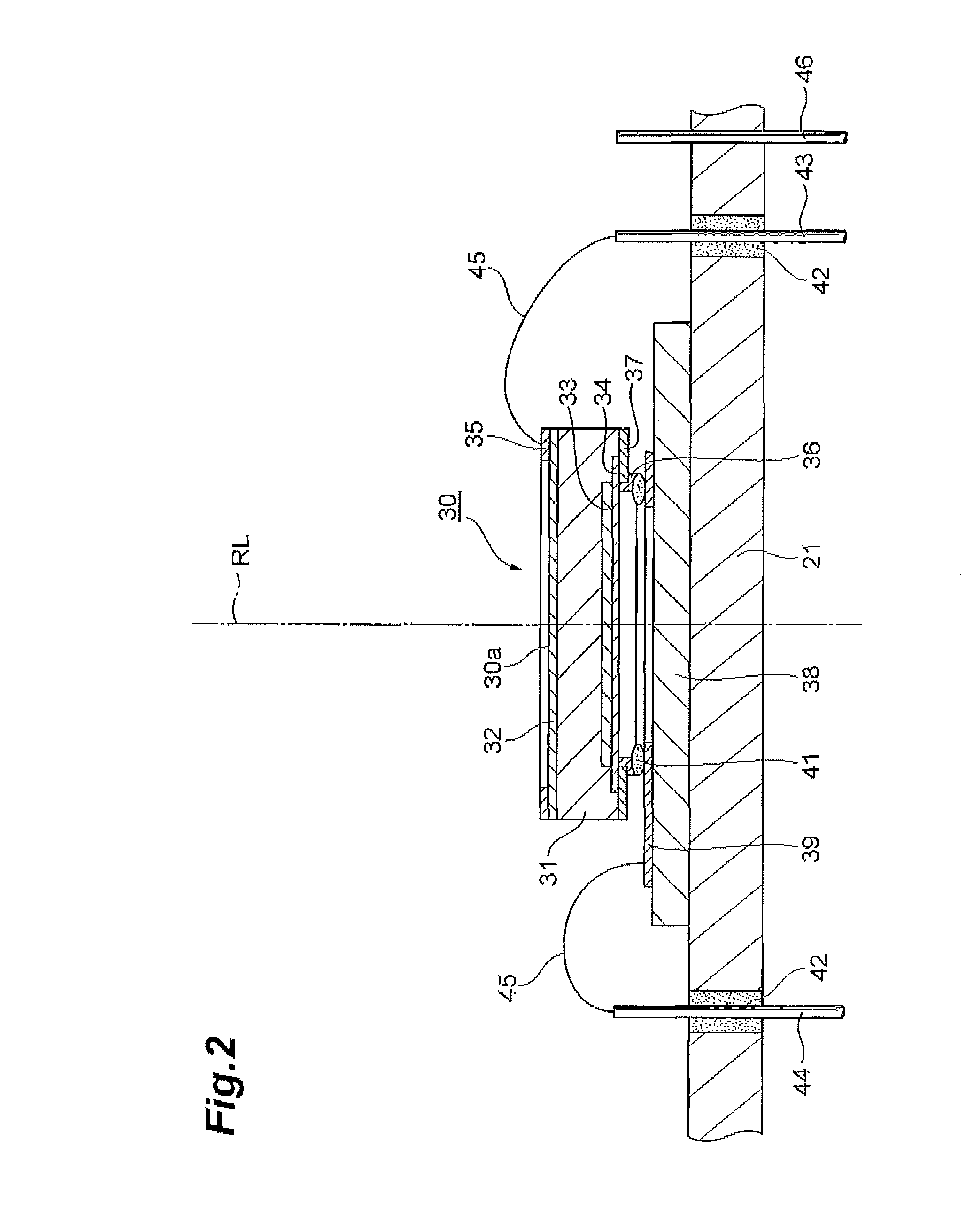Ion detector
a detector and ion technology, applied in the field of ion detectors, can solve problems such as improving detection accuracy, and achieve the effects of suppressing the formation of positive electric fields, improving the incidence efficiency of positive ions, and improving the incidence efficiency of negative ions
- Summary
- Abstract
- Description
- Claims
- Application Information
AI Technical Summary
Benefits of technology
Problems solved by technology
Method used
Image
Examples
first embodiment
[0049]FIG. 1 is a longitudinal sectional view of the ion detector of the first embodiment of the present invention. FIG. 2 is an enlarged view which shows the ion detector of the first embodiment in a state of being electrically connected to an avalanche photodiode.
[0050]As shown in FIG. 1, an ion detector 1A is provided with a rectangular parallelepiped box-shaped chamber (housing) 2 which is made of SUS 304 (stainless steel). On a side wall 2a of the chamber 2, there is installed an ion entrance 3 having a circular shape in section for allowing positive ions to enter (for example, about 10 mm in diameter). On a side wall 2b of the chamber 2 which is opposed to the side wall 2a, there is installed an opening 5 including the ion entrance 3, when viewed from a direction in which the side wall 2a is opposed to the side wall 2b. At the opening 5, a mesh 6 made of SUS is placed so as to run along an inner surface of the side wall 2b. An insulating member 7 made of a PEEK (polyether ethe...
second embodiment
[0066]Next, a description will be given of the ion detector of the second embodiment. FIG. 3 is a longitudinal sectional view of the ion detector of the second embodiment and that of the third embodiment in the present invention. FIG. 4 is an enlarged view which shows the ion detector of the second embodiment in a state of being electrically connected to an avalanche photodiode.
[0067]An ion detector 1B of the second embodiment is different from the ion detector 1A in that a stem 21 is not directly in contact with a chamber 2 and electrically insulated from the chamber 2 (refer to FIG. 3). Further, the ion detector 1B is different from the ion detector 1A in that a lead pin 44 is electrically connected to the stem 21 (refer to FIG. 4).
[0068]As shown in FIG. 3, the stem 21 is disposed in the chamber 2 of the ion detector 1B. The stem 21 has an external shape which is smaller than a diameter of an opening 12 installed on a bottom wall 2d of the chamber 2 and that of an opening 13 insta...
third embodiment
[0072]Next, a description will be given of the ion detector of the third embodiment. FIG. 5 is an enlarged view which shows the ion detector of the third embodiment which is in a state of being electrically connected to an avalanche photodiode.
[0073]An ion detector 1C of the third embodiment is different from the ion detector 1A in that a stem 21 is electrically insulated from a chamber 2 (refer to FIG. 3). The ion detector 1C is also different from the ion detector 1B in that a lead pin 43 is electrically connected to the stem 21 (refer to FIG. 5).
[0074]The lead pin 43 is directly fixed to the stein 21 and thereby electrically connected to the stem 21. The lead pin 43 is a pin which is connected to a p-electrode 35. Therefore, the stem 21 which is electrically connected to the lead pin 43 becomes equal in potential to the p-electrode.
[0075]According to the ion detector 1C, as with the ion detector 1B of the second embodiment, a potential of the stem 21 is electrically insulated fro...
PUM
 Login to View More
Login to View More Abstract
Description
Claims
Application Information
 Login to View More
Login to View More - R&D
- Intellectual Property
- Life Sciences
- Materials
- Tech Scout
- Unparalleled Data Quality
- Higher Quality Content
- 60% Fewer Hallucinations
Browse by: Latest US Patents, China's latest patents, Technical Efficacy Thesaurus, Application Domain, Technology Topic, Popular Technical Reports.
© 2025 PatSnap. All rights reserved.Legal|Privacy policy|Modern Slavery Act Transparency Statement|Sitemap|About US| Contact US: help@patsnap.com



